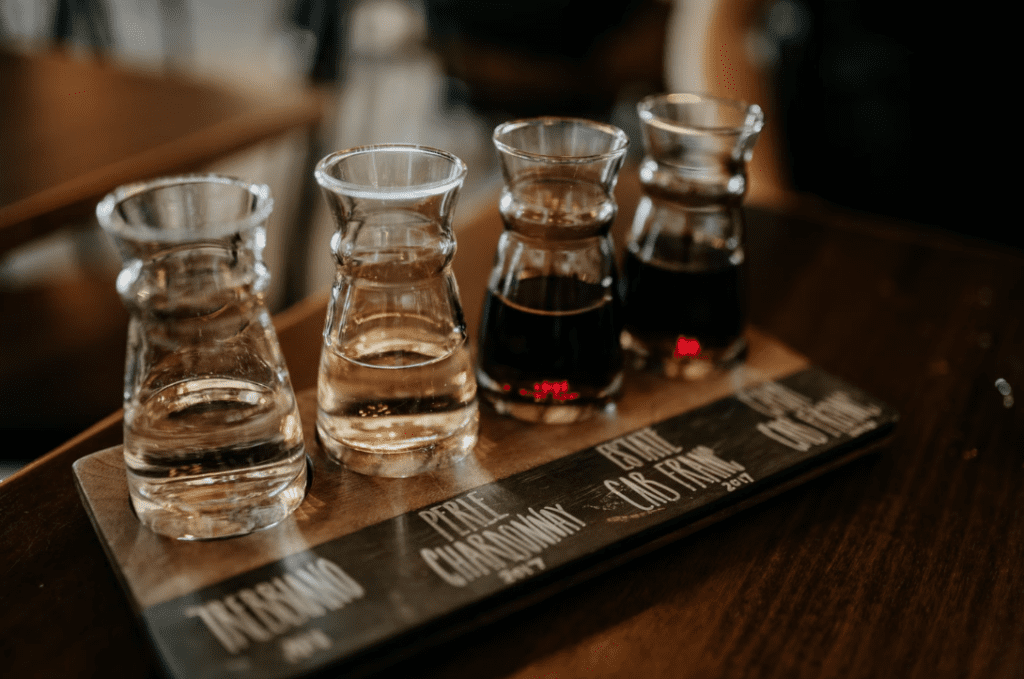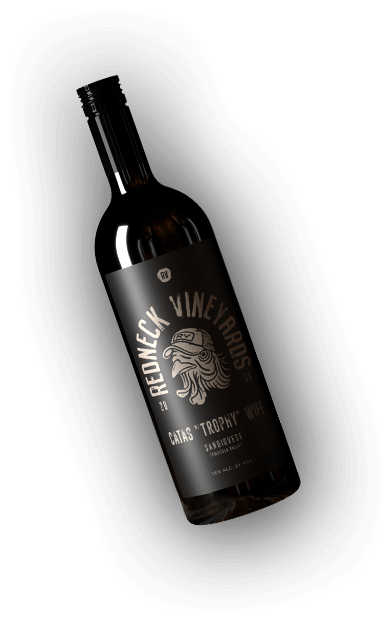Wine Tasting
How Long Is a Wine Tasting?
Wine enthusiasts who live near or regularly vacation in wine country are likely familiar with a typical wine tasting experience. For everyone else, the process might be a bit of a mystery and can even seem intimidating. Is it like going to a wine bar? How long will it take? Will you be laughed at if you don’t know what tannins are? Learning what is involved in a wine tasting and the many ways in which the experience varies from winery to winery should make you feel much more comfortable with this very enjoyable activity.
Firstly, a wine tasting takes approximately as long as going out for lunch, anywhere from 30 minutes to a couple of hours. It depends mostly on how busy the tasting room is at the time of your visit. Secondly, know that the wine world isn’t as exclusive or stuffy as you might imagine. All are equally welcome, from total novices to life-long oenophiles, and skillful hosts will tailor the tasting experience to help you feel at ease.
A Typical Wine Tasting Experience
Wine tasting experiences vary considerably in their vibe from venue to venue. Some venues are enormous operations with multiple indoor and outdoor seating spaces, long menus of tasting flight options, and a whole lineup of extras to augment a tasting session. Others are small, family-run wineries with a handful of tables in an intimate space and a short list of specialty wines. The average winery tasting room is somewhere in between. Wineries nearly always charge a fee for tastings, which can range widely but is generally waived if you buy a bottle or two.
Almost every tasting has the same basic components in common. Expect to be served a series of small samples of wines produced by that particular winery. A tasting flight averages around five to seven different wines, served one at a time in a particular order. Most will provide a flier or sheet of information about each wine along with their names and some tasting notes. It can be helpful to brush up on basic wine terms so you can keep track of these details as you taste. A tasting room might offer a single flight option, or one red flight and one white. Some offer multiple flight options, such as premium flights or dessert wines.
The wines making up a flight are generally fixed, so don’t try to customize the lineup. Your server might have some flexibility to substitute one of the options if you have a strong preference, but don’t assume this is the case.
How to Taste Wine
Some people might roll their eyes at the idea of a “correct” way to taste wine. Don’t you just drink it? However, wine tasting is an experience intended to showcase the fascinating nuances of different wines. It’s a great opportunity to figure out your own preferences and learn about the many characteristics of every unique wine.
If you’re not yet experienced in the art of wine tasting, here’s the basic process:
- Don’t down the wine sample immediately after it’s poured.
- Listen to any tasting notes provided by your server.
- Taste slowly and mindfully, paying attention to all your senses.
- Look at the wine in the glass. Assess its color and transparency, which indicates the character of its body, or weight.
- Swirl the glass gently, holding it by the stem or base, to help release the wine’s aromas. Notice whether or not the wine has “legs,” the long drips that cling to the sides of the glass after swirling.
- Smell the wine, sticking your nose right into the glass and inhaling. Engaging your sense of smell as well as taste helps you appreciate the wine more astutely.
- Take a decent-sized sip, swishing the wine around in your mouth if you wish, and consider its flavor profile.
- Take at least one more sip, which might give a slightly different impression than the first.
- Enjoy the remainder of the sample, if you wish. If you dislike the wine and don’t want to finish it, it’s perfectly acceptable to pour the remainder into a spit bucket. Or let your server know you don’t want to finish it.
- Spit buckets are always available on request, but only use them if you want to. Their main function is for those who want to keep their alcohol intake to a minimum, for example, if you have multiple tastings planned in one day.
When your group has finished tasting a wine, your server will return to pour the next. They will generally use the same glass, unless you’re switching from white to red. You can give the server polite feedback about the previous wine and ask questions about the next, but don’t feel you have to discuss every wine in depth.
Buying Bottles of Wine
At the end of a wine tasting, you can decide whether or not to purchase any bottles of the wines you sampled. Know that there is absolutely no obligation to do so, and it’s perfectly acceptable to enjoy a tasting as a stand-alone experience. If you want to buy one of the wines you have tasted, just let your server know. They will typically waive the tasting fee and ring you up before you leave. Remember, bottles of wine make great gifts too!
Factors Affecting the Time Frame
The major factor influencing how long a wine tasting takes is how busy the tasting room is when you visit. Make a reservation to avoid delays in being seated. If you’re short on time or don’t want to be rushed, make a reservation at a less busy time, such as a weekday morning. Call a winery in advance and ask about their busiest times. The time frame of a tasting also varies with the vibe of a tasting room; some simply invite a more leisurely experience than others. Treat the question of how long to stay at a tasting as if you were at a restaurant or cafe. If it’s busy and you can tell your table will be needed for the next group, don’t feel rushed, but try not to linger for long after your tasting has finished.
Wine Tasting Extras
Many wineries offer additional experiences alongside a wine tasting, which naturally add to the duration of the experience. If you need to know a more accurate time frame, call the winery in advance. Extras might include behind-the-scenes tours of the cellars, production facilities, or vineyards. You might get to chat with a winemaker and learn how the wines are made.
Some wineries offer charcuterie, snacks, or even full menus along with their wine tastings. Wines by the glass are often available as well. Many wineries have at least a small gift shop offering branded products and wine-related items. Allow a little extra time for browsing if you like to shop.
Ready for Wine Tasting?
If you’re ready to book a trip to Temecula, Southern California’s premier wine country, be sure to visit Sweet Oaks for a tasting.



